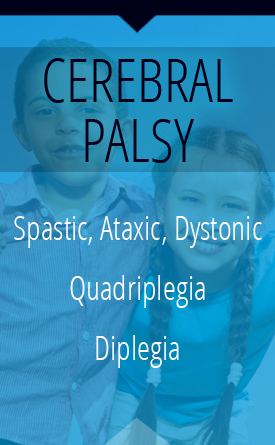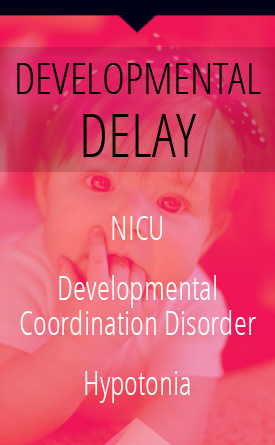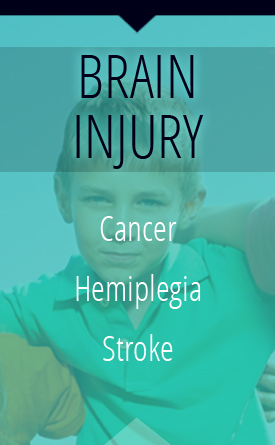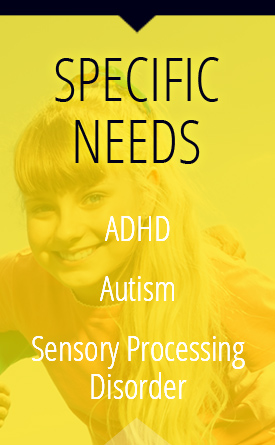
It’s not always obvious why children are having difficulty or how to help… but that’s where I come in!

Children need Occupational Therapy because they:
- Have challenges with coordination, planning movements, or appear clumsy
- Have difficulty with impulse control
- Go from “0 to 60” very quickly
- Experience anxiety or have anxious thoughts often
- Need more physical assistance than other children
- Have delays in development as an infant, toddler, or preschooler
- Received a medical diagnosis
- Were born with medical complications
- Experienced trauma (big or small)
- Demonstrate avoidance or refusal to do activities
- Need extra help to socialize with other children
- Dot not play well with children
- Have difficulty switching from one activity to another
- Show extreme reactions to changes in routine
- Demonstrate difficulty following directions
- Have difficulty in school
- Have trouble with writing or reading
- Have low self-esteem
- Are easily frustrated
I help your child through these challenges and during the therapy process I become their advocate, teacher, and their biggest cheerleader.
Keep reading to see how your child works one-on-one with me or and head on over to Kids and Parent Groups to see how I work with parents and children in groups.
CHILDREN WHO BENEFIT
Children who have difficulties with daily routines at home, in school, or social settings may benefit from Occupational Therapy.
The children who benefit from my approach may or may not have a diagnosis. Parents commonly have concerns with emotional regulation skills, motor and coordination skills, non-integrated primitive reflexes, academic concerns with reading and writing, strength and endurance, or concerns with social skills, attention and/or executive functioning. Children who benefit are able to work on small, attainable goals with a personalized treatment program. Occupational therapy does not cure a child from their diagnosis or completely remove life’s difficulties; but the end result is a child who is much happier, confident, and able to reach their full potential because I am dedicated to their progress.
The parents of the children I work with actively participate in the therapy process because they want to see sustainable progress and use strategies in daily routines. This includes asking questions, including other adults and caregivers in the child’s progress, working on therapy goals outside of therapy, ongoing communication, and modeling and practicing strategies during sessions.
Because I have experience working with children from 10 days old to 21 years old
I have helped children achieve a wide variety of skills.
Some of the most beautiful moments have happened when a child learned how to:
Squeeze mom’s hand for the first time.
Take their first steps.
Point to communicate.
Write their name.
Sit independently.
Tied their shoes.
Make a friend.
Use adaptive equipment to walk or wheel across the room.
Return to play their favorite sport.

WHAT DOES YOUR CHILD
NEED HELP WITH?
(click the link to find out how)
Fine Motor Skills
|
Self-Care Skills
|
Gross Motor Skills
|
Visual Motor Skills
|
Social Skills
|
Sensory Processing
Fine Motor Training
The most common reasons why children need fine motor training is because they:
Drop things all the time.
Cannot tie their shoes.
Squeeze too tightly or not tight enough.
Are not reaching for toys/objects.
Have trouble with handwriting.
Have difficulty using both hands together.
Need help using their hands with a communication device.
Are having trouble with buttons, zippers, snaps, a fork, spoon, or knife.
Results are achieved through task analysis, a motor control and motor learning approach, scaffolding, a biomechanical approach and if appropriate, strengthening and range of motion strategies, specific to the hands and arms. The Handwriting Without Tears program is utilized if handwriting is a concern.
Activities of Daily Living (ADLs) or Self-Care Skills
ADLs are habits and routines that make up your child’s day.
The most common reasons why children need my help is because they need to problem-solve a way to improve:
Dressing
Eating
Hand-washing
Using the bathroom
Brushing/combing hair
Brushing teeth
With Occupational Therapy intervention, your child can achieve independence with self-help skills that are appropriate for their age, development, and cognitive abilities.
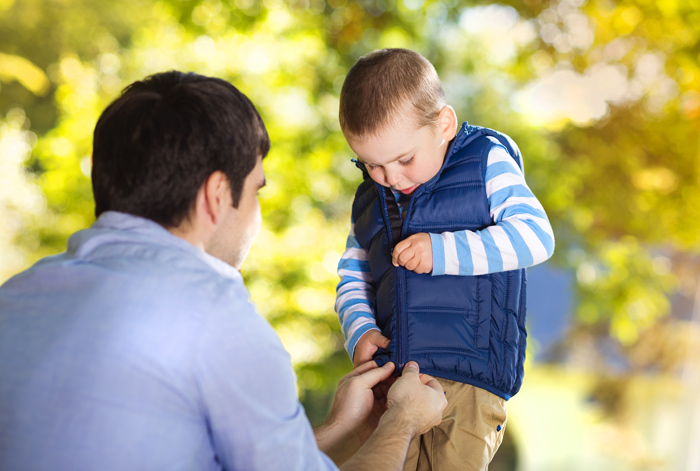

Ask Vanessa about adaptive equipment training and adapting the environment to promote safety and independence.
813-448-2858 [email protected]
INDEPENDENCE = CONFIDENCE
Among the parents I work with, self-care is an area many parents stop asking their child to be independent in, and automatically help their child with, even if their child can do most of the self-care skill by themselves, because helping their child is the faster and easier way.
After working with me, the biggest change I consistently see is with the parents, because while I teach your child the motor skills, patience, and confidence they need to be more independent in self-care skills, I also teach the parent how it’s most efficient to help. Commonly, when the child achieves independence in self-care skills, the parents I work with find they have more time for themselves.
The result is an increase of quality family time, a happier child, and an empowered parent!
Gross Motor Training
Gross Motor Skills use the legs, arms, and core muscles and include skills like coordination and balance. Depending on your child’s age and abilities, gross motor skills will look different. Gross motor skills are influenced by our strength, muscle tone, bone structure, body awareness, spatial awareness, neurology, and environment.

The most common gross motor skills and benefits children have achieved with Vanessa:
Rolling and crawling.
Sitting and standing.
Walking independently.
Decreased fear of falling.
Decreased clumsiness, improved coordination.
Increased strength.
Increased balance.
Increased body awareness.
Increased participation in team sports/classes.
Through neuromuscular re-education, a biomechanical approach, primitive reflex integration, motor learning and motor control strategies, and for some, Aquatic Therapy, your child improves areas of concern that are appropriate for their age, development, and cognitive abilities.

Ask Vanessa about adaptive equipment training to enhance function with gross motor skills!
For years, I have taught children how to be safe and efficient when using single-point canes, walkers, and wheelchairs during their daily routines.
Visual Motor Training
Visual motor skills require teamwork from the eyes, hands, and body.
If one of these team members is not cooperating, your child may have difficulty:
Paying attention.
Writing or reading.
Finding objects in a busy environment.
Matching shapes and letters.
Completing puzzles.
Manipulating fasteners.
Getting dressed.
Playing sports, gymnastics, swimming, or other physical activity.
Falling frequently or bumping into things more than other children.
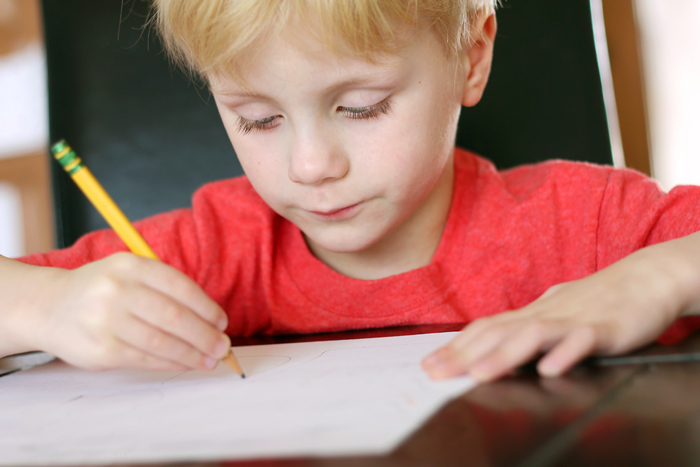
Using primitive reflex integration, developmental, neurophysiological, sensory, motor learning approaches, The Alert Program, Astronaut Training, and compensatory strategies, I help your child’s visual-motor systems work as a team so they are successful in their area of concern.
Results vary depending on the age and ability level, but children who have worked on visual-motor-integration therapy with me have gained independence in dressing, improved grades on report cards, improved reading and writing skills, and improved their coordination for sports and other physical activity.
Social Skills
Social skills begin when a child is in the womb and skills continue to flourish from the moment they are held in your arms for the first time.
Occupational Therapy helps with social skills so your child is able to interact with the environment and others in the most efficient way for their age, development, and diagnosis.
The most common reasons why children need my help is because they need to strategies to improve:
Eye contact
Waiting
Frustration tolerance
Direction following
Self-confidence in social settings
Age appropriate social interactions
Expression of wants and needs with verbal and non-verbal strategies
Reciprocal interactions (turn taking, play with peers, etc)
Social skills may improve through one-on-one therapy sessions, Group classes offered through out the year, and parent consults. Interventions used to improve social skills include but are not limited to reflex integration, sensory integration, child-directed therapy, cognitive-behavioral approaches, emotional regulation strategies, and Therapeutic Listening.
At a variety of ages, I have helped children go from being the bully of the class to the head of the class. I have helped children and parents communicate effectively, even when the child had no spoken language skills. Every day I help children form friendships and facilitate peer mentorships.
Sensory Integration

Sensory integration allows our senses to work together as a team. When vision, hearing, touch, taste, smell, along with two other sensory systems (proprioception and vestibular) are working as a team, a child is able to focus and go through the day with little difficulty. When a child shows sensory integration difficulties, it is because one of his/her sensory systems is over-reactive or under-reactive.
I help you determine which system is out-of-sync and show your child and you how to integrate their sensory systems with real-life solutions.
Did you know?
Proprioception helps us with body awareness, giving us feedback to/from our joints and muscles to know where our body is in the environment.
The vestibular system helps us with balance and coordination and provides our brain feedback about our movement in regards to our head position.
Your child may have sensory processing difficulties if they:
Are constantly moving or wiggling.
Have difficulty playing with friends.
Cover their ears often.
Have irrational fears.
Startle easily to noises.
Show impulsive behavior.
Are sensitive to touch.
Get easily frustrated.
Have difficulty wearing specific clothing items.
Show emotional difficulty switching from one activity to the next.
Over-react to hair brushing or washing, teeth brushing, or bathing.
Have low energy and prefer to be more sedentary more than peers.
Appear to ignore what you say, even if you know their hearing is okay.
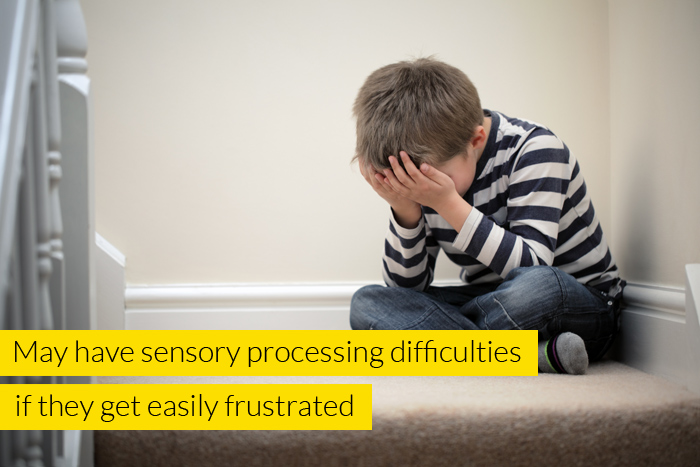
Results are achieved through primitive reflex integration, sensory integration strategies, cognitive-behavioral strategies, and emotional regulation strategies.
Results will vary based on each child, but can look like: minimizing meltdowns, improving impulse control and/or attention, increasing independence in daily routines,
increasing confidence and lowering frustration tolerance, minimizing sensory challenges with sounds, sight, touch, coordination, and more.



